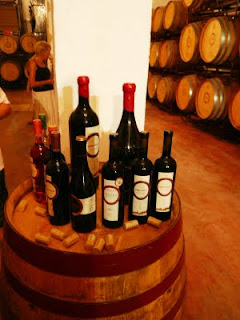It's been an Ikea weekend again. Friday, on the drive back from a short visit in our former home town of Roquetas, we stopped at the Ikea in Murcia, in a never-ending quest to fill up just a little more wall space with books and bookcases.
Our timing was not good. We reached the highway around Murcia at 2:10 in the afternoon, just as thousands of people were headed home for Friday luncheon and siesta. Or so we thought. When we got into the Ikea parking lot, and then the store, we knew where they really went for siesta. Not sleeping in the furniture display as reportedly done in Beijing, but definitely passing the afternoon time of day.
Though we have practically memorized the downstairs warehouse location of Billys and Bennos, we still had to go upstairs into the exposition part of the store because there was one new (to us) model that we had to check out and get the stats on. A half hour later we were making our way through the warehouse, picking our packages, and then we spent several minutes in line before paying. No recession here! People were buying. Out to the parking lot gymnasium, where strange contortions are often evident as people (including us) struggle to get heavy packages into or onto the car or truck.
We managed to position four units inside our Ford Fusion and then returned to the second floor café for our traditional snack of canapé de gambas (open-faced shrimp sandwich) and cervesa sin (beer without (sin) alcohol). No siesta here! It seemed as though everyone in the store had assembled in the restaurante and were all eating, talking, and laughing with family. One more stop-off at the well-equipped tienda sueca to pick up arenque (herring) in various glass jars to take home for our Saturday smørrebrød. Arenque must not be as popular with the Spanish as the albóndigas and other hot dishes and desserts in the restaurant--they had lowered the price to a euro a jar!
Sated for now, and prepared for the next meal, we drove home single file, i.e., passenger behind the driver, as the bookcase boxes were spread on the entire right side of the car, from trunk through the front seat. On Saturday the man of the house magically turned cardboard boxes into standing bookcases, and the woman of the house prepared a smørrebrød with four kinds of herring. And today, we are emptying boxes under the bed and filling new bookcases in our offices and bedroom.

